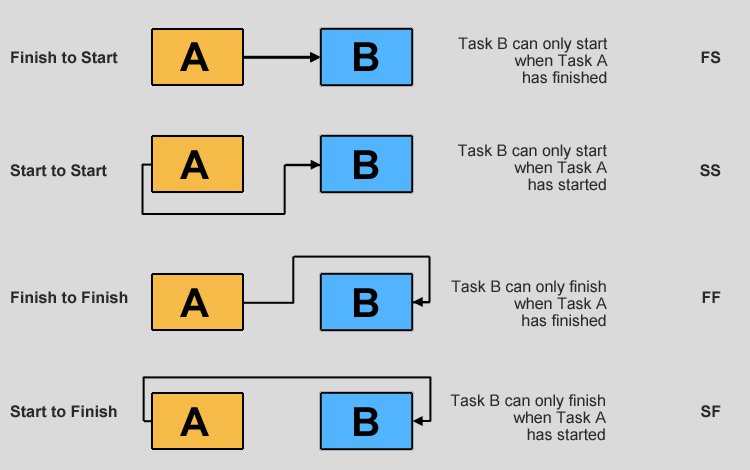
What are dependencies in project management?
Updated on Wednesday, 3rd July 2024 15:25
In project management, dependencies are defined as tasks that require the completion of a previous task before they can be actioned, i.e. they “depend” on the previous activity. Every project has dependencies, often there are several sequences to a task which are dependent on one another. The scope of a project requires these tasks to be completed in order.
Why do we need project dependencies?
Setting out the project’s dependencies is crucial to its overall success. A project manager needs to:
- Lay out the sequences of tasks within the project plan
- Calculate how long each task is expected to take
- Identify the necessary resources to complete each task, as well as potential scheduling issues
- Monitor and manage tasks as part of the overall project plan
- Identify and action any opportunities to accelerate the project’s task schedule
Examples of dependencies in project management
Let’s say you’re doing a construction project and have to build, plaster and paint a wall. The plastering can’t start until the wall has been built, and the wall can’t be painted until the plaster is dry.
As well as internal, we also need to consider the external dependencies which may affect our project. In the previous example, the construction company building a wall may rely on third-party suppliers for building materials, and before building can start they will need licences and planning permission.
What are the four types of dependencies in project management?
There are four types of dependencies in project management which define the relationships between tasks:
- Finish-to-Start: The first task needs to be complete before the second task can start, as per the example above
- Finish-to-Finish: The second task can’t be finished until the first task has been done. For example, wires can be fitted into the wall, but you can’t switch the electricity on until they’ve been inspected
- Start-to-Start: The following task can’t commence until the first task has started. For example, a concrete floor can’t start to be levelled until the concrete has started pouring into the designated space
- Start-to-Finish: The first task has to start before the second task can be completed. For example, a new software installation has to start before the old installation can be stopped
Project dependency categories
As well as the types of dependencies, there are also dependency categories. These are:
Logical dependencies
These dependencies are fundamental to project completion and can’t be avoided. They are often referred to as causal dependencies, because the output of previous tasks is required as an input for the dependency. As such, they must follow on from each other and not parallel.
Preference dependencies
Preferential dependencies are not required for project completion, but are often enforced by project team members to enhance quality or ensure adherence with best practice. For example, in a software development project conducting an extra round of testing may not be required for the completion of the project, but it will have an impact on the quality of the output.
Resource-based dependencies
This category of dependency results from resource constraints within a project. Where two elements of a project require the same resources, only one of these tasks can be actioned at a time. If additional resources were available, these dependencies would not exist.
External dependencies
As the name suggests these are dependencies that result from actions outside of the project itself, e.g. third-party vendors, stakeholders or regulations. While the project manager and team have little control over these dependencies it’s important to put contingency plans in place for such cases.
How to identify dependencies in a project
Identifying dependencies is a crucial part of any project, as these tasks will heavily impact your project timeline.
To identify dependencies you first need to consider all the tasks that must be completed to achieve your project outcome. From that list you can then start to consider which of these tasks may be a logical, preference, resource-based or external dependency. For each task question what actions need to occur before it can be started or finished. This will help you identify where your project dependencies lie, and allow you to build an accurate project timeline.
How to manage project dependencies
There are many tools and techniques available to help you manage project dependencies, including:
- Gantt charts
- Logical networks
- PERT charts
- Cause and effect diagrams
- Flow and control charts
- Histograms
- Scatter diagrams
- Pareto charts
Managing dependencies within a project is vital to ensure your project is completed on time and budget.
Find out more about how PRINCE2® training can help you manage dependencies in your project.










 English
English
 German
German
 Dutch
Dutch
 Polish
Polish